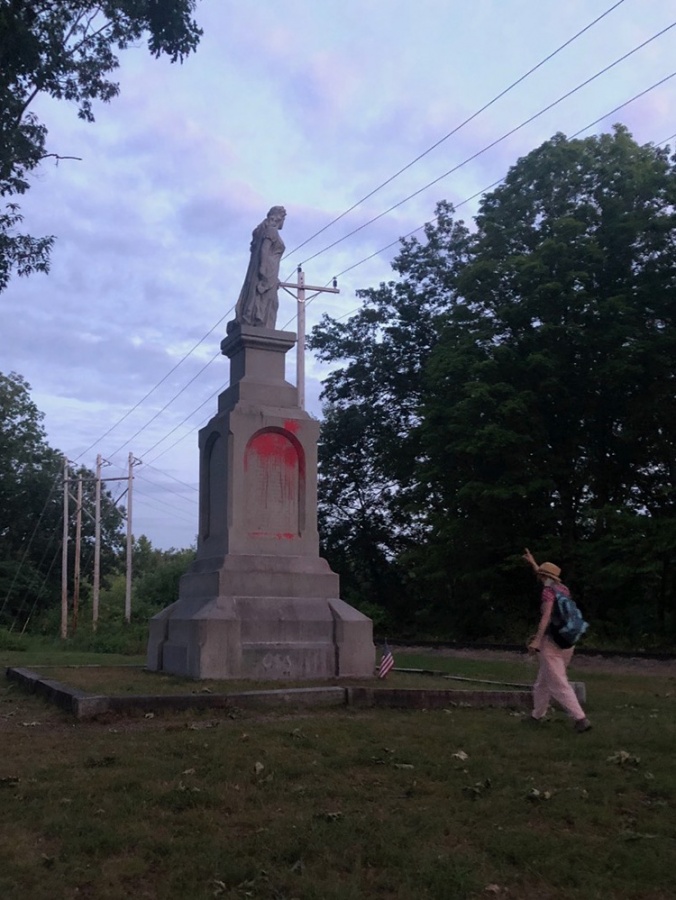Patricia Emison
“So what is the line between research and not-research? Sometimes you sit down in a concentrated way to do research, and sometimes, after a hike you stop to see a statue that’s been in the news, specifically that of Hannah Duston, once a frontier heroine and more recently a symbol of European occupation. Her statue, in a remote location near Concord, N.H., was splashed with red paint in 2020 to express sympathy with the Abenaki she killed after having been taken captive (the paint has since been removed). Later, I made a slight detour to see the bronze statue of her in Haverill, Mass. In neither case did I suppose what I was doing was research. It was simply curiosity about local monuments, old monuments that had been attracting recent attention. Over many years, I have repeatedly visited the equestrian monument in Portsmouth, N.H., and the Civil War monument made of zinc, and the World War I memorial by a Russian Jewish immigrant woman on the far side of Memorial Bridge. I looked at them from my vantage point as a historian primarily of Italian Renaissance art, asking myself about similarities and differences. But when, stuck at home during COVID with little access to museums or libraries, I reflected on what I wanted students to remember from the survey of western art I teach repeatedly, and I wrote a book, just published, called ‘Art and its Observers,’ which tries to incorporate these and other local monuments into an understanding of the wide-ranging artistic tradition that has evolved over many centuries. It isn’t a textbook, but it isn’t a traditional research monograph either: I hope it is a book for anyone who wants a prompt to think about art old and new.”
—Patricia Emison, Professor of Art History

















































